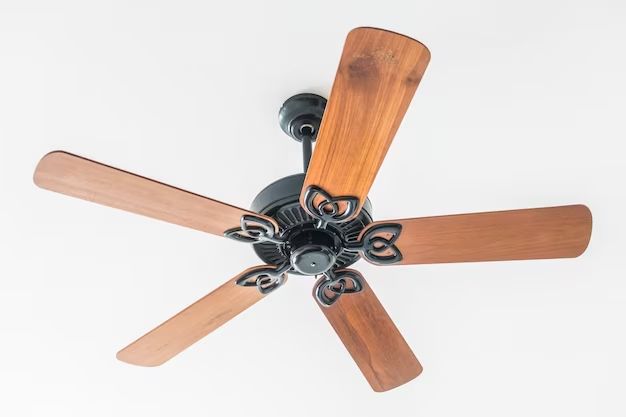Ceiling fans have come a long way in recent years with new trends and innovations that make them more efficient, quieter, and better looking than ever before. Some of the latest trends in ceiling fan design include:
Page Contents
Smart Ceiling Fans
One of the biggest trends is the rise of smart ceiling fans that connect to home automation systems and can be controlled remotely via smartphone apps. Major brands like Hunter, Hampton Bay, and Haiku have released smart ceiling fan models over the past few years. The apps allow you to adjust fan speed, dim lights, set schedules, and monitor energy usage from anywhere.
Smart ceiling fans make it easy to get the right amount of airflow or lighting without having to get up and use pull chains. You can also integrate them with smart home devices like Google Home or Amazon Alexa for voice control. Some even provide features like automatic seasonal optimization that changes the direction and speed to keep you comfortable year-round.
Energy Efficient Motors and Blades
Another ceiling fan trend is a focus on increased energy efficiency. New motors like DC motors are more efficient than the older AC motors used in most traditional fans. They use less energy overall and some are approved by Energy Star ratings. The design of fan blades has also improved, with wider spans and aerodynamic shapes to optimize air circulation.
Ceiling fans use far less energy than air conditioners to keep rooms cool. Maximizing their efficiency makes them an even more eco-friendly choice. Ceiling fan companies are making energy efficiency a priority in their new product releases.
Sleeker Low-Profile Designs
Many new ceiling fans have a minimalist, streamlined look with thinner blades and low-profile mounting. Hugger fans and flushmount fans are ideal for rooms with lower ceilings. The compact sizes make them unobtrusive while still providing good airflow.
Modern and contemporary style ceiling fans from companies like Monte Carlo emphasize smoother, cleaner lines. Even wood and rustic ceiling fans are getting slimmer profiles. The less bulky designs give a lightweight, airy look that blends well with both classic and current home decor trends.
High-End Materials and Finishes
Ceiling fan manufacturers are using higher-end materials and attention to detail in their designs. Oil-rubbed bronze, brushed nickel, and other metallic finishes give a sophisticated, quality look. The use of real wood blades has also increased, including exotic woods like teak, ebony, and bamboo.
Premium features like integrated lighting, reversible blades, and blade pitch adjustment provide versatility. Brands known for stylish design like Minka Aire offer fashion-forward options with unique shapes and color combinations.
Larger Sizes and Dual Mount Options
With open floor plans and vaulted ceilings becoming popular in homes, larger ceiling fans are a necessity to properly circulate air. Fans sized 52 inches, 56 inches, and even larger with longer downrods help increase airflow in big rooms.
Dual mount, also called reversible mount, is another helpful option allowing the fan to be installed close to the ceiling or lower as needed. This dual mounting versatility gives more flexibility in staggering heights for optimal circulation.
Expansion of Styles and Choices
Ceiling fan companies continue expanding the wide range of styles to meet any homeowner’s taste from traditional to industrial. Niche styles like box fans, drum fans, and brand name collaborations with Restoration Hardware or Ralph Lauren Home expand options.
More manufacturers offer designer collections that fuse artwork, murals, or graphic patterns with the ceiling fan blades for a focal point. Customized options through mass retailers like Lowe’s or online companies allow picking blade styles, finishes, lights, and controls for a personalized look.
Quieter Operation
Excessive noise from older ceiling fans could make sleeping or conversation difficult. Through better construction and blade balancing, many new fans run much more quietly and have sound ratings under 25 decibels.
DC motors reduce mechanical noise versus AC motors. Blade shapes with steeper pitches also contribute to quieter operation as they efficiently move air with less buffeting. If you want a peaceful, relaxing environment, look for low decibel ratings when choosing a ceiling fan.
Expanded Lighting Choices
In addition to providing airflow, ceiling fans commonly include light fixtures. The lighting options have expanded with trends toward smart bulbs, energy efficiency, and flexible designs.
Many fans now accommodate flushmount or semi-flush lights like LED or compact fluorescent. Dimmable light kits give variable lighting control for different situations. Smart bulbs can change colors and be controlled remotely by app. Remote controls built into fans or wall controls allow turning the fan and lights on/off from your bed.
Conclusion
Ceiling fan innovation continues to give homeowners more options for maximizing comfort and style. The focus is on smart integration, energy efficiency, sleeker designs, premium materials, niche styles, customization, quietness, and lighting versatility. As energy costs rise, customizable ceiling fans emerge as an attractive solution combining style, function, and energy savings year-round.
